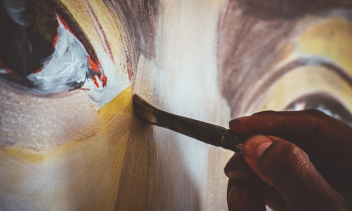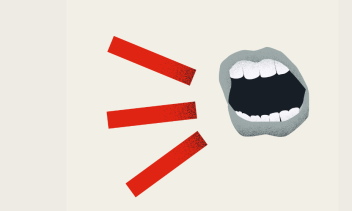Excerpted from Baderech: Along the Path of Teshuva, by Judah Mischel. Mosaica Press, September 2021. Reprinted with permission.
ענה ואמר: בדרך ספרתי מעשה, שכל שהיה שומעה, היה לו הרהור תשובה, וזו היא:
The Rebbe spoke up and said, “While on my journey, I told such a story that whoever heard it had a thought of teshuvah, return. And this is the story…”
Introduction to Sipurei Maasios (Rebbe Nachman’s Stories)
It was an unseasonably warm Erev Rosh Hashanah afternoon in Uman, Ukraine. Along with tens of thousands of others, I made the trip together with a band of friends who are brothers, heeding the call of Rebbe Nachman of Breslov to “travel to the Tzaddik”—to daven and celebrate “the day of coronation” and the start of the new year in his presence.
I was standing on Pushkina Street, called by some “Poh Shechinah,” meaning “the Divine Presence is here.” Indeed, divine Jews of every stripe, color, and persuasion joyfully filled the streets surrounding the tziyun, the resting place of Rebbe Nachman—a community of yearning souls forming a beautiful tapestry that reflected the light of Rabbeinu, Rebbe Nachman. Friends old and new were greeting each other, em bracing, with the sound of music and prayer and chevrah, camaraderie, in the air.
Strangers were stopping strangers just to shake their hands, with openness and sincerity. Loving, exuberant calls of shalom aleichem were heard from every corner. The excitement was palpable.
After the powerful communal recitation of the Tikkun Klali (Rebbe Nachman’s “Universal Remedy,” comprising ten chapters of Tehillim), I was heading back down “Pushkina-Shakedown” street, enjoying the scene and looking for ice cream, when I literally bumped into an acquaintance from Jerusalem. An older, wiser, and more experienced traveler, I asked if he had any advice, an eitzah—a tip for the journey.
He smiled, and answered softly, “Just be yourself…and have the humility to follow instructions.” With an earnest smile and slightly mischievous tone, he added, “Have a sweet new year,” and continued quickly down the road.
The simple hadrachah, guidance, struck me in a profound way, and resonated with everything I had been wanting and trying to live with for so long.
What does it mean to “just be yourself?” And what are the “instructions” we are meant to humbly follow? And why did it take traveling halfway across the world to the darkness of the Ukraine for such an epiphany?
Yiddishkeit begins ba’derech,with the story of a journey: “לך לך מארצך—Go from your land.”[1] The “lech lecha” of Avram and Sarai initiates a new modality of being: navigating the unknown, living in process, in the middle, on the way. Traversing the gulf between one point and another means letting go of self-definitions, not being bound by “place.”
“Liminal” means relating to a transitional or initial stage of a process, occupying a position at, or on both sides of a boundary or threshold. To be an alive person means to be in a liminal state of change, growth, and development. By means of lech lecha, we initiate a journey from our old home, our birthplace and family, away from all that is known and familiar. The destination is unknown. We open ourselves to discovery and transformation to uncover our deeper origin story.
Perhaps this can shed light on why so many stories take place “on the road,” on an unfolding derech to the Master.
Rabbeinu Yonah describes the powerful effect of seeing tzaddikim and being exposed to true Torah leaders: “Sleeping hearts will reawaken when they see the splendor of honoring Torah and recognize its gran deur. A great desire will enter their hearts to learn Torah for Hashem’s sake and to serve Him wholeheartedly.”[2] Coming into contact with a wise person who embodies Divine light can light us up.
Even just setting out on a journey to a tzaddik is full of blessing. Rebbe Nachman encouraged and praised those who made the effort to travel to him:
With every step they would take on their way, an angel was created. They asked him, “But what about all our efforts and the steps we take before we finally hire the coach to bring us?” “Those are definitely also included,” replied the Rebbe. “Every one of those steps also creates an angel.” Just before his last Rosh Hashanah in Uman, the Rebbe spoke about this again and said these words: “Oh to have the merit to see ohr behirus ha’derech, the clear, radiant light of the roads you travel to be with me.”[3]
The Maggid of Mezeritch defined the derech, one’s individual spiritual path, as “a journey to the tzaddik.” There are tzaddikim, holy and wise, both living and in the world of eternal life. The pathway to self actualization and personal revelation is one of internal discovery. As Reb Nosson of Breslov suggests, a journey to our inner tzaddik awakens emunas atzmo, confidence in ourselves: “A person must have emunah in himself, that he is precious in the eyes of Hashem, for commensurate with the magnanimity and goodness of Hashem, so is each person great and important in Hashem’s eyes.”
An “external” encounter with a truly righteous person awakens the soul, connecting us to our nekudas ha’tzaddik, the shared point of light within us that remains holy and pure. While the light we are seeking is actually deep inside us, a physical journey is part of the process of its revelation. When we hit the road and go on a search, we engage in an out-picturing of our inner story, our personal spiritual journey. When we go out and travel, we will eventually find a proverbial “Pushkina Street” and meet wise fellow travelers. They can provide us with keys not only to meet the outer tzaddik but also to unlock the light of the tzaddik within.
This journey of seeking and finding our own inner light is the definition of teshuvah, returning to our purpose and to who we really are.
והתשובה הראשית, שהיא מאירה את המחשכים מיד, היא שישוב האדם אל עצמו, אל שורש נשמתו, ומיד ישוב אל האלקים, אל נשמת כל הנשמות, וילך ויצעד הלאה מעלה מעלה בקדושה ובטהרה. ודבר זה נוהג בין באיש יחידי, בין בעם שלם, בין בכל האנושיות, בין בתקון כל ההויה…רק באמת הגדולה של התשובה אל עצמו ישוב האדם והעם, העולם וכל העולמים, ההויה כולה, אל קונה, לאור באור החיים.
The first step in teshuvah, which immediately illuminates the darkness, is for a person to return to himself, to the root of his soul, and immediately return to God, to the Soul of all souls, and stage by stage he will continue to progress and develop in holiness and purity. This is true for an individual, an entire nation, for all of humanity, and for the perfection of all of existence.
It is only through the great truth of returning to oneself that the individual, the nation, the world, and all of the worlds—all of existence—will return to its Maker to be illuminated by the light of life.[4]
—
[1] Bereishis 12:1.
[2] Shaarei Teshuvah 3:147.
[3] Chayei Moharan 291.
[4] Rav Avraham Yitzchak HaKohen Kook, Oros Ha’teshuvah 15:10.








